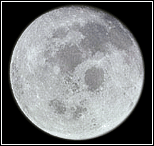History of Lunar Calendars

The lunar calendars of the Chinese, Babylonians, Greeks, and more
 |
Related Links |
The most common form of calendar before the modern era
The lunar cycle, with the smooth and constant changing of the moon night to night, formed the basis of many of the world's calendars.
The most common lunar calendar is probably the Hijri (Islamic) calendar.
Most are actually lunisolar calendars, meaning they're lunar calendars with some adjustments to match the seasons and the solar year. Some lunisolar calendars include the Hebrew calendar, the Chinese calendar, the Hindu calendar, and the Vietnamese calendar. The Islamic Republic of Iran also uses a modified version of the Islamic calendar which is lunisolar.
In fact, because many Christian holidays are based off of Jewish holidays, most Christians also follow some lunisolar traditions.
Some seasonal issues
During antiquity the lunar calendar that best approximated a solar-year calendar was based on a 19-year period, with 7 of these 19 years having 13 months. In all, the period contained 235 months. Still using the lunation value of 291/2 days, this made a total of 6,9321/2 days, while 19 solar years added up to 6,939.7 days, a difference of just one week per period and about five weeks per century.
Even the 19-year period required adjustment, but it became the basis of the calendars of the ancient Chinese, Babylonians, Greeks, and Jews. This same calendar was also used by the Arabs, but Muhammad later forbade shifting from 12 months to 13 months, so that the Islamic calendar now has a lunar year of about 354 days (except in Iran). As a result, the months of the Islamic calendar, as well as the Islamic religious festivals, migrate through all the seasons of the year.
Still in use today
Although the world at large has adopted the Gregorian calendar due to the influence of Western empires, many cultures still keep track of their traditional lunar calendars for holidays. Hindu and Jewish holidays are still based on the lunisolar calendar, as are New Year's celebrations across East and Southeast Asia.







